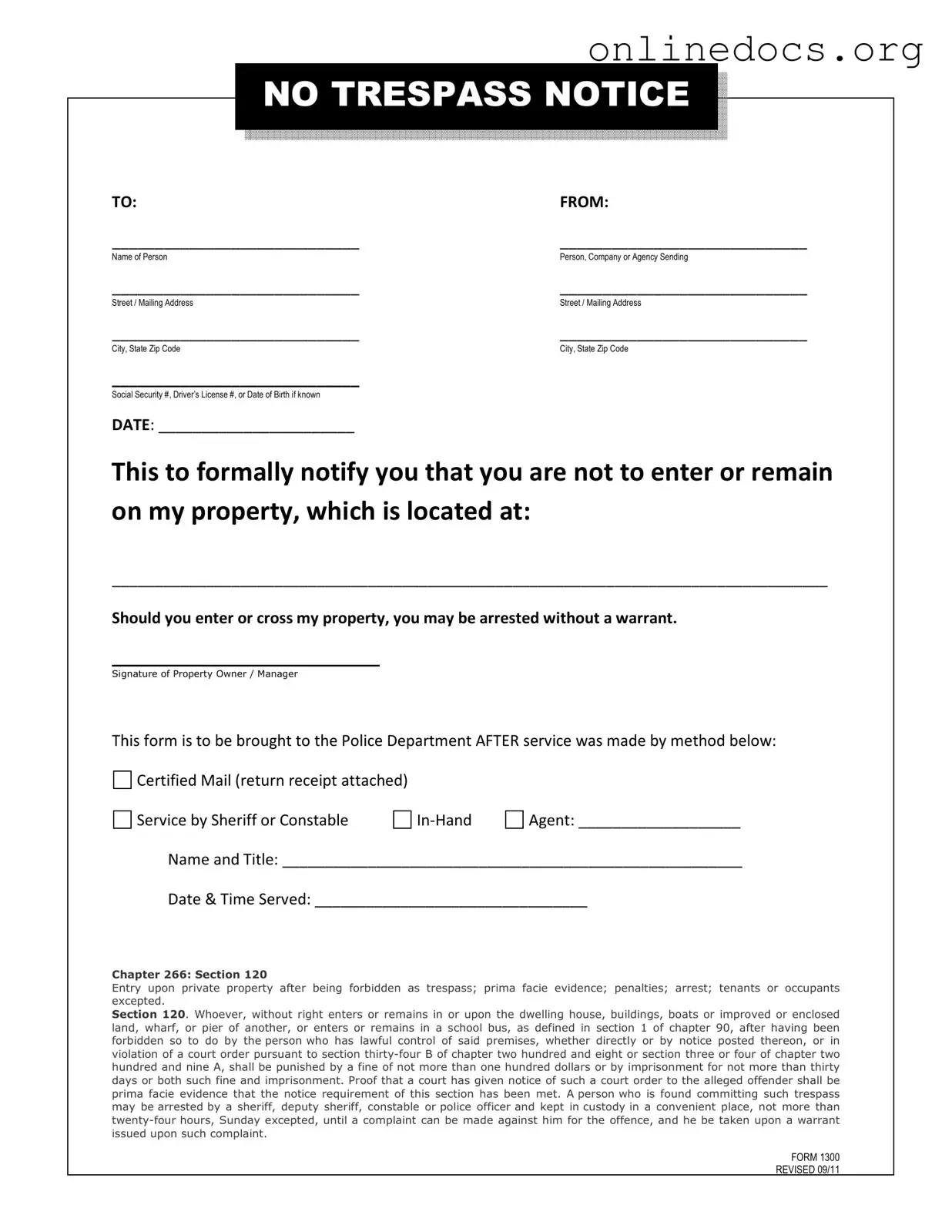A Cease and Desist Letter serves a similar purpose to a No Trespassing Letter, as it formally requests an individual to stop a specific action that is deemed unlawful or harmful. This document is often used in cases of harassment, copyright infringement, or breach of contract. By sending a Cease and Desist Letter, the sender establishes a clear record of the objectionable behavior and provides the recipient with an opportunity to correct their actions before further legal steps are taken. Both documents aim to protect the sender's rights and property, although the Cease and Desist Letter typically addresses actions rather than physical trespassing.
Understanding the nuances between various legal documents, including a Bill of Sale, is essential for ensuring that rights are protected during transactions. For those engaged in sales, reviewing resources such as legalformspdf.com can provide valuable insights and templates that cater specifically to state requirements, thereby facilitating a smoother process for both buyers and sellers.
A Demand Letter is another document that shares similarities with a No Trespassing Letter. It is typically used to request payment or the fulfillment of a legal obligation. Like a No Trespassing Letter, a Demand Letter serves as a formal notice to the recipient, outlining the specific actions required to remedy a situation. Both documents emphasize the importance of clear communication and provide a written record of the sender's position. In the context of property disputes, a Demand Letter may be used to request the removal of an unauthorized occupant or to seek compensation for damages.
An Eviction Notice is also comparable to a No Trespassing Letter in that it communicates to an individual that they must vacate a property. This document is commonly used in landlord-tenant relationships when a tenant has violated the terms of their lease agreement. An Eviction Notice specifies the reasons for the eviction and outlines the timeline for compliance. While a No Trespassing Letter may address unauthorized entry, an Eviction Notice is focused on formally removing someone who has a legal right to occupy the property but has breached their lease terms.
A Property Management Notice can be likened to a No Trespassing Letter, particularly when it addresses issues related to unauthorized access or behavior on a property. Property management companies often issue these notices to inform tenants or visitors about rules and regulations regarding property use. Like a No Trespassing Letter, a Property Management Notice serves to protect the property owner's interests and maintain order within the premises. Both documents aim to establish boundaries and clarify expectations for behavior on the property.
A Trespass Warning is another document that shares characteristics with a No Trespassing Letter. This warning is typically issued by law enforcement or property owners to inform individuals that they are not permitted to enter or remain on a specific property. A Trespass Warning serves as a precursor to potential legal action, similar to a No Trespassing Letter. Both documents communicate the property owner's intent to restrict access and outline the consequences of ignoring the warning, which may include arrest or legal penalties.
